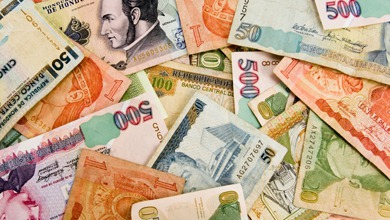Going Global with Small-Caps in 2012
 Imagine for a moment that 2011 was a normal year for investors and by “normal” we mean that Europe wasn’t pressuring global financial markets on an almost daily basis and emerging markets generated solid alpha as they did in 2010. While that obviously wasn’t the case this year, if and when things return to normal and we hope that’s soon, investors will want to have some exposure to international developed markets and emerging markets in their portfolios.
Imagine for a moment that 2011 was a normal year for investors and by “normal” we mean that Europe wasn’t pressuring global financial markets on an almost daily basis and emerging markets generated solid alpha as they did in 2010. While that obviously wasn’t the case this year, if and when things return to normal and we hope that’s soon, investors will want to have some exposure to international developed markets and emerging markets in their portfolios.
And if financial markets really rebound in 2012, there’s an excellent part of that rally which will be attributable to small-caps. Remember that when it comes to investing in international small-caps, particularly those that are not listed in the U.S., there are important issues to consider.
First, if you’ve ever been frustrated about the lack of information available on a small-cap issue listed here in the U.S., that situation can be amplified many times over with an international stock.
Second, the aforementioned scenario could be interpreted by some investors as a reason to stay away from global small-caps…and if you’re one of those, keep reading. Third, ETFs are an excellent way for investors to access international small-cap issues, both in developed and emerging markets.
With that, let’s have a look at some preferred options for tapping global small-caps in 2012 via ETFs.
IndexIQ Canada Small Cap ETF (NYSE: CNDA):
The rub with investing in Canada is that the country’s proximity to the U.S. can be a burden and a gift. If the U.S. economy is performing, then many investors believe the same is true for Canada. The reverse is true, as well. If things look bad here in the States, investors typically think the same is true north of the border.
The good thing about the IndexIQ Canada Small Cap ETF is that with more than three-quarters of its weight devoted to energy and materials stocks, if the high-beta trade is restored, this ETF will surge. Hey, even a big move higher in oil prices would help this ETF.
WisdomTree International SmallCap Dividend ETF (NYSE: DLS):
It has been recently noted that the WisdomTree International SmallCap Dividend ETF “dodges” Europe. Well, we’re not so sure about that. The ETF has allocations to 20 countries, 15 of which are in Europe. And of those 15, nine are Euro Zone nations. That said, almost 55% of this ETF’s weight is devoted to Japan and Australia and the yield of roughly 4.1% is too good to ignore.
Market Vectors Russia Small-Cap ETF (NYSE: RSXJ):
We’re going to start with the bad news: Investing in Russia is not for the faint of heart. The good news is that if oil prices climb and emerging markets stocks, both large- and small-caps, rebound next year, Russian stocks easily could be leaders not followers. The biggest risks to RSXJ’s success in the New Year are political issues in Russia and declining oil prices. It’s probably safe to start with small positions now and wait for a breakout over $18.
Guggenheim International Small Cap LDRs (NYSE: XGC):
XGC is a nifty global ETF that doesn’t get a lot of headlines and that might be because it has plunged more than 34% year-to-date. That could mean the ETF is poised for at least a decent rebound in 2012. Not to mention, XGC has a nifty country mix. Here it is: China 35.8%, Brazil 16.8, Mexico 9.9%, Argentina 7.0%, Chile 6.9%, Russia 5.1%, Netherlands 4.3%, Japan 4.0%, Israel 3.9%, South Africa 2.6%, Ireland 1.2%, India 1.1%, Indonesia 0.7%, France 0.5%, Denmark 0.3%.
ETFs that combine developed and emerging markets are useful for the truly global investor, but underrated by many so-called experts. The bottom line is an ETF like XGC alleviates the burden of stock-picking among international small-caps.
Posted by Dr. Micro







